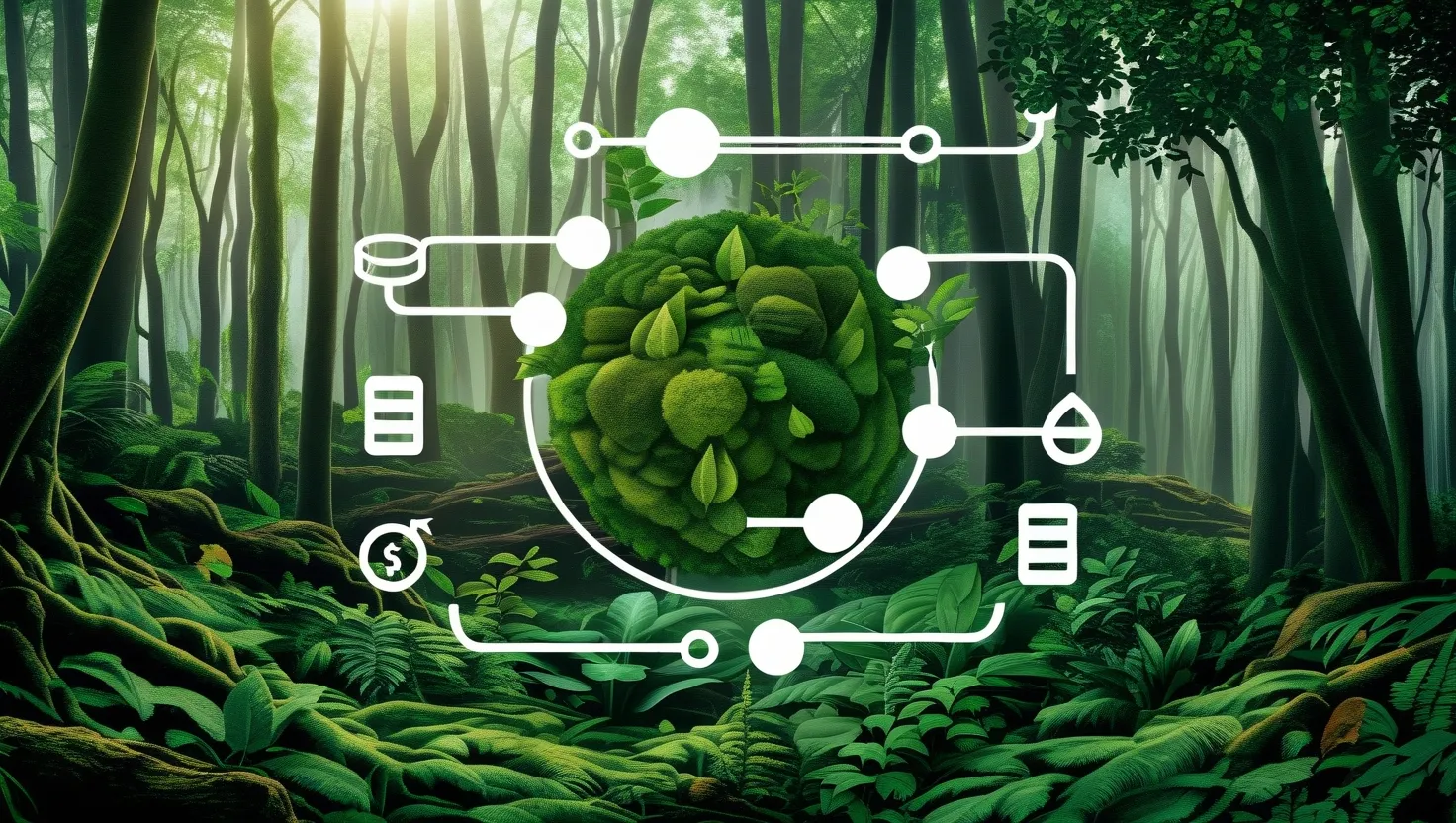In the pursuit of a smarter, more resilient financial strategy, it’s time to look to an unexpected mentor: nature. Imagine crafting an investment portfolio that mirrors the adaptability, diversity, and interconnectedness of natural ecosystems. This approach, often termed biophilic investing, is not just about green investing or sustainability funds; it’s about embedding the timeless principles of nature into your financial decisions.
Understanding Nature’s Resilience
Nature has been perfecting its survival strategies for millions of years. Ecosystems thrive because they are diverse, adaptable, and interconnected. A forest, for example, is not just a collection of trees; it’s a complex web of relationships between trees, soil, microorganisms, and wildlife. Each component plays a unique role, supporting and balancing the others. When one part of the ecosystem faces a challenge, the entire system adapts to mitigate the impact.
Applying Nature’s Principles to Investing
To build a biophilic investment portfolio, you need to think of your investments as components of a living ecosystem. Each investment should play a unique role, supporting and balancing the others. Here’s how you can start:
Diversity
Just as a diverse ecosystem is more resilient to changes, a diverse investment portfolio can better withstand market volatility. Instead of focusing solely on traditional sectors like technology or finance, consider investing in companies that operate in various industries. For instance, you might invest in a renewable energy company, a sustainable agriculture firm, and a tech startup that develops eco-friendly products. This spread reduces your risk and increases the potential for long-term growth.
Adaptability
Nature is adept at adapting to change. Trees grow deeper roots during droughts, and animals migrate to find better habitats. Similarly, your investments should be able to adapt to changing market conditions. Look for companies that are agile and innovative, capable of pivoting their strategies in response to new challenges or opportunities. For example, a company that transitions from fossil fuels to renewable energy is more likely to thrive in a world increasingly focused on sustainability.
Interconnectedness
In nature, everything is connected. The health of one species can affect the entire ecosystem. In your investment portfolio, consider how different investments interact with each other. For instance, investing in a company that produces sustainable materials can support another investment in a construction firm that uses those materials. This interconnectedness can create a robust and resilient portfolio.
Real-World Examples
Let’s look at some real-world examples of how biophilic investing can work:
Nature-Based Solutions
Investing in nature-based solutions, such as reforestation projects or wetland restoration, can provide both environmental and financial benefits. These projects not only help mitigate climate change but also create jobs and improve local ecosystems. For example, the European Investment Bank’s Natural Capital Financing Facility has supported numerous nature-based projects across Europe, demonstrating how such investments can be both profitable and sustainable.
Biophilic Design
Companies that incorporate biophilic design into their operations can see significant benefits. Biophilic design involves integrating natural elements into built environments, which can improve employee well-being, reduce operational costs, and increase productivity. A hotel that incorporates natural ventilation, native plants, and natural materials into its design can attract more guests and increase revenue. This approach not only enhances the guest experience but also contributes to a healthier and more sustainable environment.
Community Engagement
Biophilic investing is not just about individual investments; it’s also about community engagement. Cities that adopt biophilic planning strategies can create more resilient and sustainable communities. For instance, urban green spaces can reduce urban temperatures, control floodwaters, and improve air and water quality. These spaces also foster social cohesion and prosocial behavior, making the community more resilient to various challenges.
Overcoming Challenges
While biophilic investing offers many benefits, it also comes with its own set of challenges. One of the main hurdles is the lack of traditional financial metrics to evaluate these investments. Nature-based solutions, for example, may not generate immediate returns but offer long-term benefits that are harder to quantify.
To overcome this, it’s essential to adopt a holistic approach to evaluating investments. Consider not just the financial returns but also the environmental and social impacts. This might involve using new financial instruments such as thematic bonds, sustainability-linked bonds, or carbon credits to support nature-based solutions.
Personal Touches and Lessons Learned
Personally, I’ve seen the impact of biophilic investing in my own life. When I invested in a sustainable agriculture project, I not only supported local farmers but also saw a steady return on my investment. The project’s focus on biodiversity and soil health ensured that it was resilient to climate fluctuations, making it a stable addition to my portfolio.
Another lesson I’ve learned is the importance of community involvement. Investing in local green initiatives can have a profound impact on the community’s well-being and resilience. For example, a community garden project can provide fresh produce, improve air quality, and serve as a social hub for the community.
The Future of Biophilic Investing
As we move forward, it’s clear that biophilic investing is not just a niche strategy but a necessary approach for a sustainable future. Climate change and economic insecurity are intimately linked, and addressing one without the other is futile. Biophilic institutions and investments offer a way to reconcile nature and the economy, ensuring that our financial strategies support life and livelihoods rather than undermining them.
By embracing the principles of nature—diversity, adaptability, and interconnectedness—you can build an investment portfolio that is robust, flexible, and resilient. This isn’t just about making money; it’s about creating a financial strategy that aligns with the well-being of both humans and the planet.
In this world, market volatility becomes less threatening because your investments are designed to adapt and evolve, just like nature does. So, the next time you think about your investment strategy, consider the wisdom of nature. It might just be the key to a smarter, more sustainable financial future.






